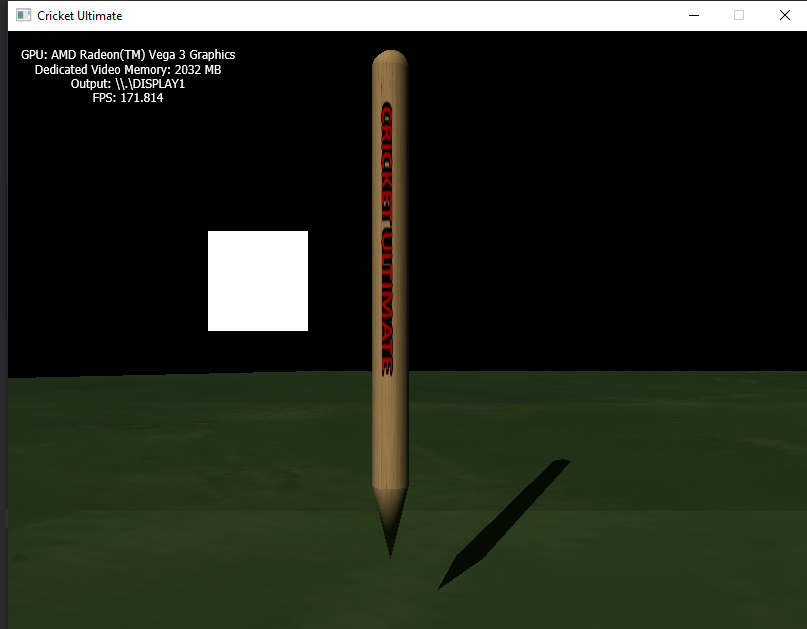I recently implemented the CSM in my engine. When I ran it in my laptop(AMD Vega GFX on Win 10), the shadows are rendered correctly. The same code w/o any modification, I ran it in my desktop(NVIDIA on Win 7), the shadows are not rendered correctly in fact they are missing. I didn't have time to isolate the problem. Why does that happen? Here's some codes.
void CSM_GetLightViewProjection(int Cascade_Index, Camera *ActiveCamera, XMMATRIX &LVP)
{
XMFLOAT3 FrustumCorners[] = { XMFLOAT3(-1, 1, 0 ),
XMFLOAT3( 1, 1, 0 ),
XMFLOAT3( 1, -1, 0 ),
XMFLOAT3(-1, -1, 0 ),
XMFLOAT3(-1, 1, 1 ),
XMFLOAT3( 1, 1, 1 ),
XMFLOAT3( 1, -1, 1 ),
XMFLOAT3(-1, -1, 1 ) };
XMMATRIX Camera_ViewProj = XMMatrixMultiply(ActiveCamera->mView, ActiveCamera->mProjection_Cascade[Cascade_Index]);
XMMATRIX InverseCameraViewProjection;
InverseCameraViewProjection = XMMatrixInverse(NULL, XMMatrixTranspose(Camera_ViewProj));
for (int i=0; i<8; i++)
FrustumCorners[i] = TransformTransposed(FrustumCorners[i], InverseCameraViewProjection);
XMVECTOR FrustumCenter = XMVectorSet(0,0,0,1);
for (int i=0; i<8; i++)
FrustumCenter += XMLoadFloat3(&amp;FrustumCorners[i]);
FrustumCenter *= (1/8.0f);
float Radius = XMVector3Length(XMLoadFloat3(&amp;FrustumCorners[0]) - XMLoadFloat3(&amp;FrustumCorners[6])).m128_f32[0] / 2.0f;
float TexelPerUnit = (CSM_Sizes[Cascade_Index] / (2 * Radius));
XMMATRIX Scalar = XMMatrixScaling(TexelPerUnit, TexelPerUnit, TexelPerUnit);
XMVECTOR Zero = XMVectorSet(0,0,0,1);
XMVECTOR UpDirection = XMVectorSet(0,1,0,0);
XMVECTOR BaseLookAt = XMVectorSet(-LightDirection.m128_f32[0],-LightDirection.m128_f32[1],-LightDirection.m128_f32[2],1);
XMMATRIX LookAt = XMMatrixLookAtLH(Zero, BaseLookAt, UpDirection);
LookAt = XMMatrixMultiply(Scalar, LookAt);
XMMATRIX InverseLookAt = XMMatrixInverse(NULL, LookAt);
XMFLOAT3 mFC;
XMStoreFloat3(&amp;mFC, FrustumCenter);
FrustumCenter = XMLoadFloat3(&amp;Transform(mFC, LookAt));
FrustumCenter.m128_f32[0] = floorf(FrustumCenter.m128_f32[0]);
FrustumCenter.m128_f32[1] = floorf(FrustumCenter.m128_f32[1]);
XMStoreFloat3(&amp;mFC, FrustumCenter);
FrustumCenter = XMLoadFloat3(&amp;Transform(mFC, InverseLookAt));
XMVECTOR Eye = FrustumCenter - (LightDirection * Radius * 2);
mLightView = XMMatrixLookAtLH(Eye, FrustumCenter, UpDirection);
mLightProjection = XMMatrixOrthographicOffCenterLH(-Radius, Radius, -Radius, Radius,-Radius * 6, Radius * 6);
LVP = XMMatrixMultiply(mLightView, mLightProjection);
}
Texture2D txModel : register( t0 );
Texture2D DepthMapTextures[3] : register( t1 );
SamplerState ssModel : register( s0 );
SamplerState ssModelCSM : register( s1 );
...
float SampleDepthMap(Texture2D texArr[3], int index, float2 coord)
{
float ret = 0;
if(index == 0)
{
ret = texArr[0].Sample(ssModelCSM, coord).r;
}
else if(index == 1)
{
ret = texArr[1].Sample(ssModelCSM, coord).r;
}
else if (index == 2)
{
ret = texArr[2].Sample(ssModelCSM, coord).r;
}
return ret;
}
float4 PSMAIN(DS_OUTPUT Input) : SV_Target
{
float3 lightDir = -LightDirection;
float shadowBias = 0.0005;
float lightIntensity = 0;
float inputPositionInv = 1.0 / Input.PSPosition.w;
float lightPositionInv1 = 1.0 / Input.lightPosition1.w;
float lightPositionInv2 = 1.0 / Input.lightPosition2.w;
float lightPositionInv3 = 1.0 / Input.lightPosition3.w;
float depthTest = Input.PSPosition.z * inputPositionInv;
float2 shadowCoords[3] = {
float2( Input.lightPosition1.x * lightPositionInv1 * 0.5 + 0.5, -Input.lightPosition1.y * lightPositionInv1 * 0.5 + 0.5),
float2( Input.lightPosition2.x * lightPositionInv2 * 0.5 + 0.5, -Input.lightPosition2.y * lightPositionInv2 * 0.5 + 0.5),
float2( Input.lightPosition3.x * lightPositionInv3 * 0.5 + 0.5, -Input.lightPosition3.y * lightPositionInv3 * 0.5 + 0.5)
};
float lightDepthValues[3];
lightDepthValues[0] = Input.lightPosition1.z * lightPositionInv1;
lightDepthValues[1] = Input.lightPosition2.z * lightPositionInv2;
lightDepthValues[2] = Input.lightPosition3.z * lightPositionInv3;
int shadowIndex = 3;
if((saturate(shadowCoords[0].x) == shadowCoords[0].x) &amp;&amp; (saturate(shadowCoords[0].y) == shadowCoords[0].y) &amp;&amp; (depthTest > (1.0f - (DepthBounds.x * inputPositionInv))))
{
shadowIndex = 0;
}
else if((saturate(shadowCoords[1].x) == shadowCoords[1].x) &amp;&amp; (saturate(shadowCoords[1].y) == shadowCoords[1].y) &amp;&amp; (depthTest > (1.0f - (DepthBounds.y * inputPositionInv))))
{
shadowIndex = 1;
}
else if((saturate(shadowCoords[2].x) == shadowCoords[2].x) &amp;&amp; (saturate(shadowCoords[2].y) == shadowCoords[2].y) &amp;&amp; (depthTest > (1.0f - (DepthBounds.z * inputPositionInv))))
{
shadowIndex = 2;
}
float3 FinalColor = 0, AmbientColor, mAmb = float3(.48f,.77f,.46f), lAmb = float3(.2f,.2f,.2f);
AmbientColor = mAmb*lAmb;
if( shadowIndex < 3 ) //we are in a shadow map
{
float depthVal = SampleDepthMap(DepthMapTextures, shadowIndex, shadowCoords[shadowIndex]);
if((lightDepthValues[shadowIndex]-shadowBias) <= depthVal)
{
lightIntensity = saturate(dot(Input.WSNormal, normalize(lightDir)));
FinalColor = depthVal*lightIntensity;
FinalColor = saturate(FinalColor);
FinalColor = txModel.Sample(ssModel, Input.TextureCoords).rgb*(AmbientColor + FinalColor);
}
else
FinalColor = txModel.Sample(ssModel, Input.TextureCoords).rgb*AmbientColor;
}
return float4(FinalColor, 1.0f);
}





